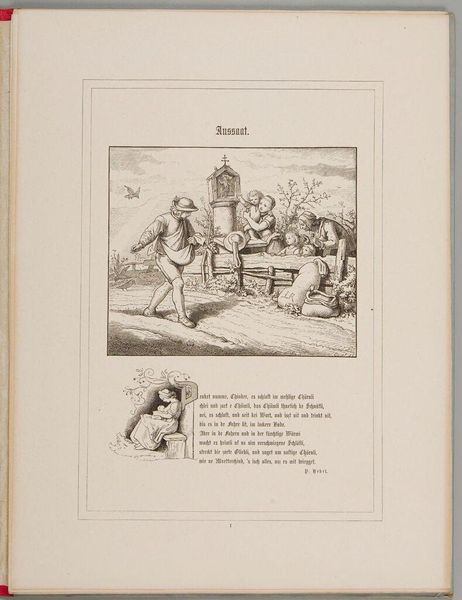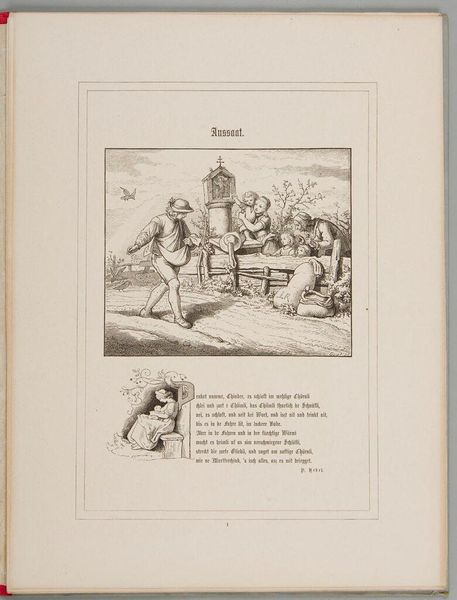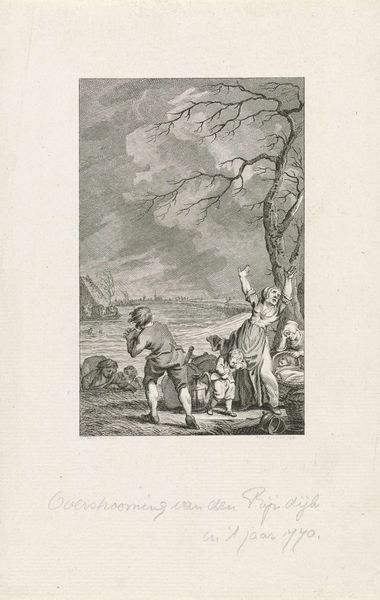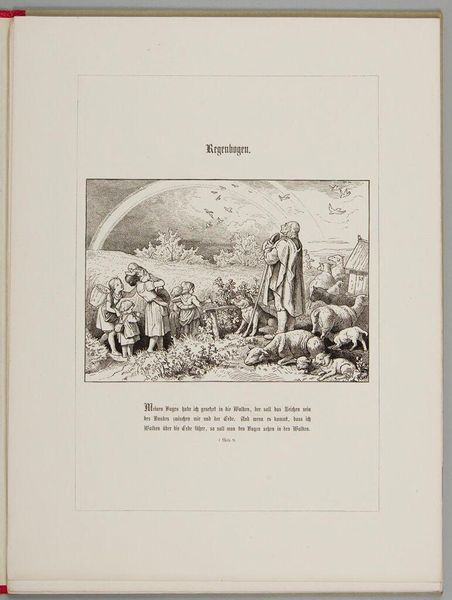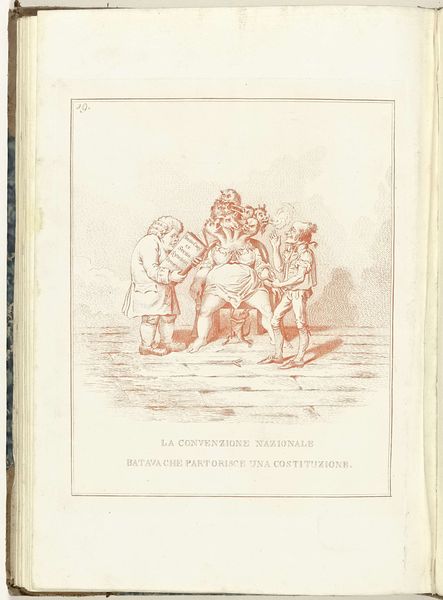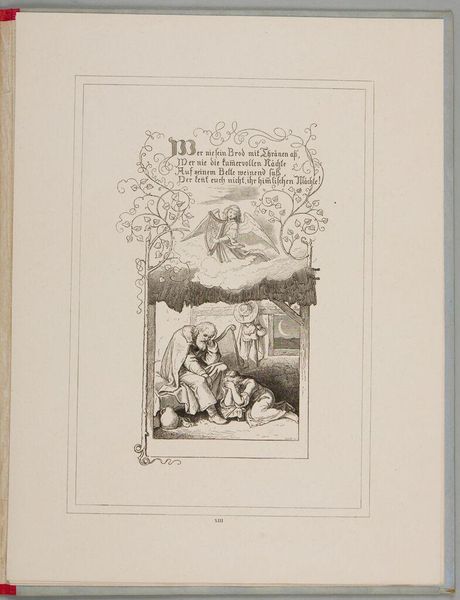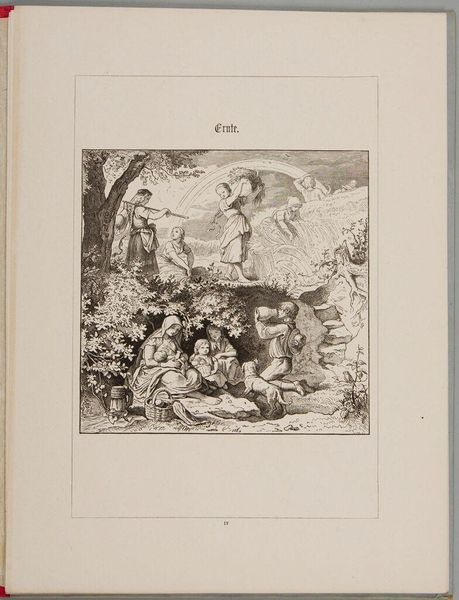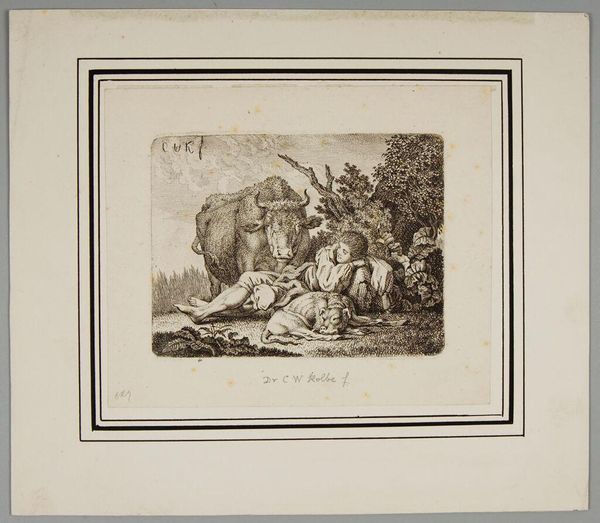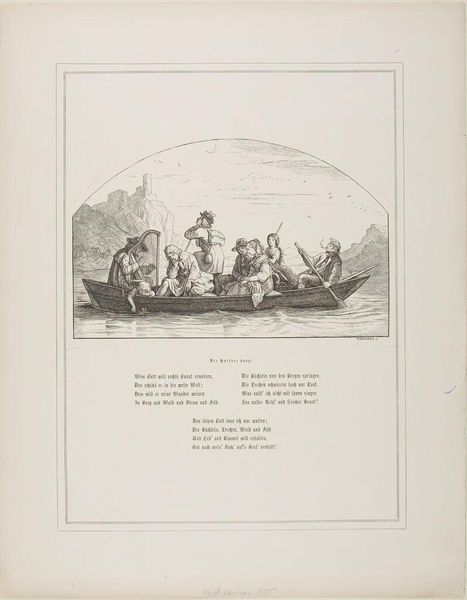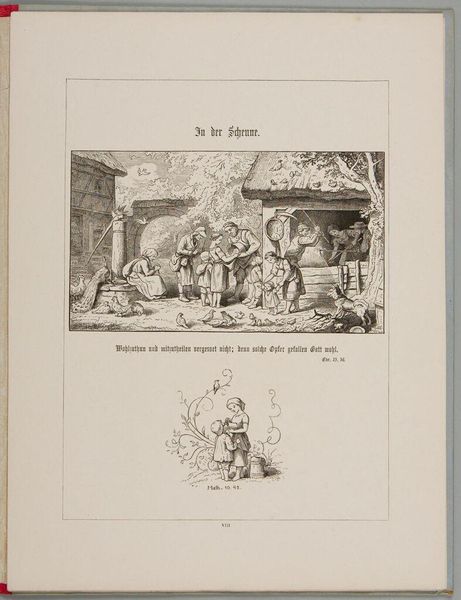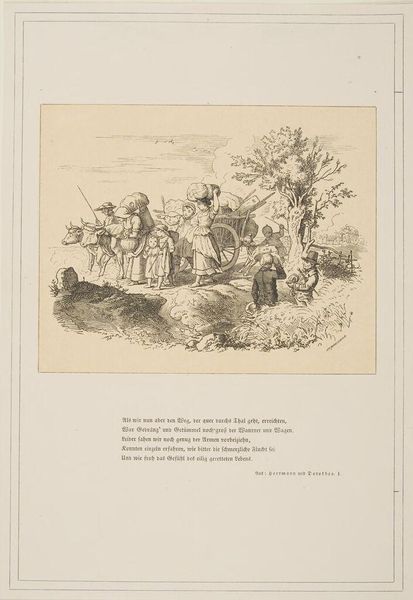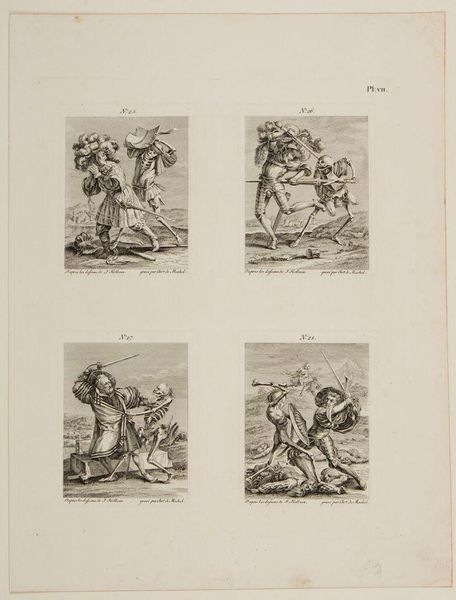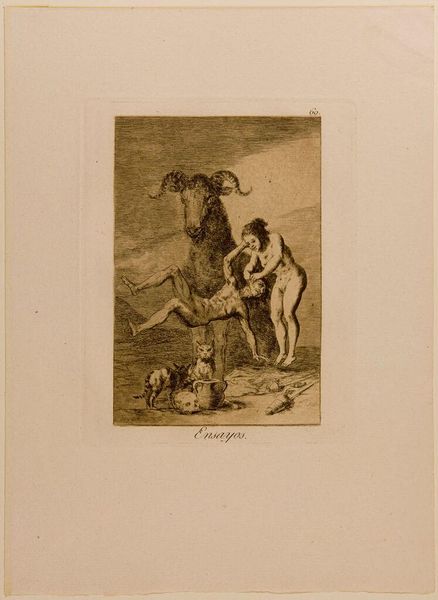
Copyright: CC0 1.0
Curator: We're looking at an anonymous print called "Gleaning," part of the Harvard Art Museums collection. It depicts a group of figures in a field. There's a certain somber mood to it, wouldn't you agree? Editor: Somber, yes. But also a study in labor and the human body's relationship to the land. Look at how they’re bent, gathering what's left behind. The print medium itself speaks to accessibility. Curator: Indeed, "gleaning" was a practice rooted in social structures. The poorest members of society were allowed to collect leftover crops after the harvest. Editor: Which is why the materials used here are so telling. A print allows for reproduction, circulation, and widespread distribution of the image and the underlying social commentary. Curator: The artist remains unknown, so we can only speculate on the print's original context and impact. Editor: Perhaps the anonymity emphasizes the universality of the scene: labor, poverty, and the cycles of consumption. Curator: It's a powerful reminder of the invisible hands that feed societies. Editor: Agreed. It's a stark image with a message still relevant today when we consider the social costs of agriculture.
Comments
No comments
Be the first to comment and join the conversation on the ultimate creative platform.
